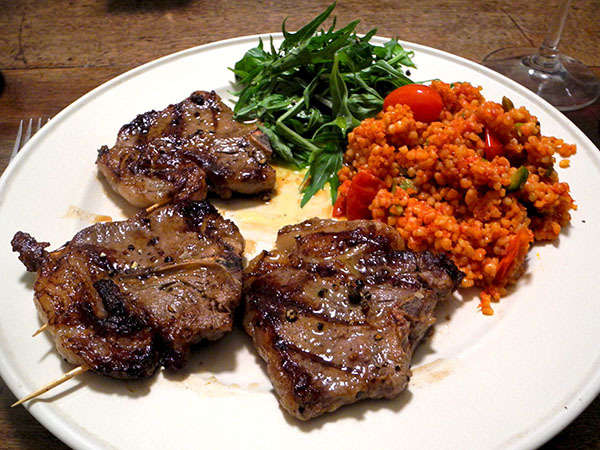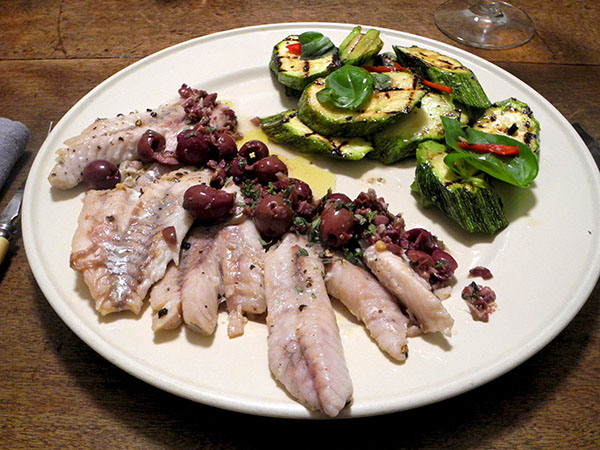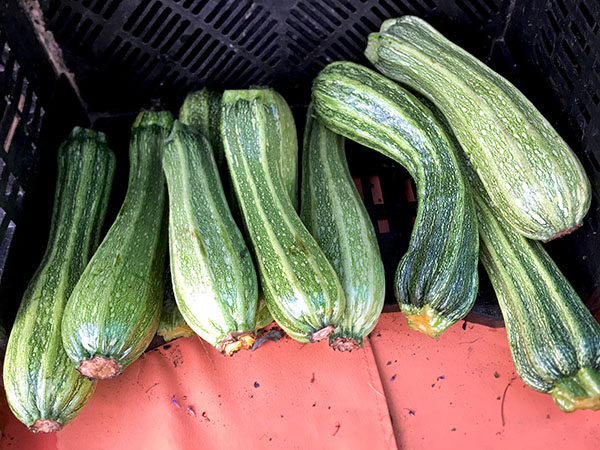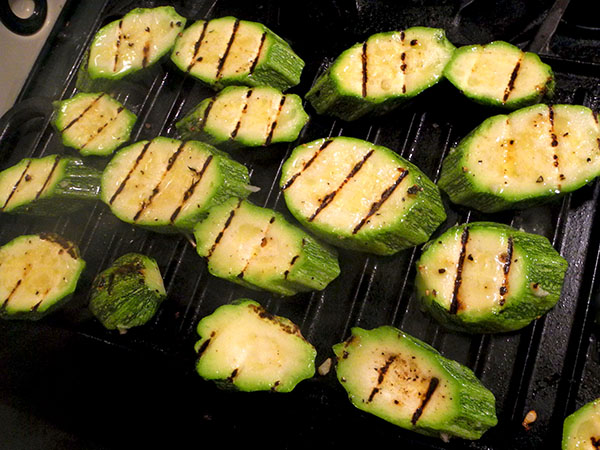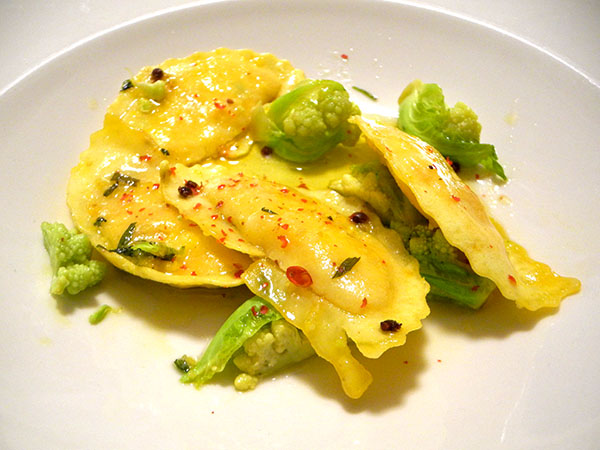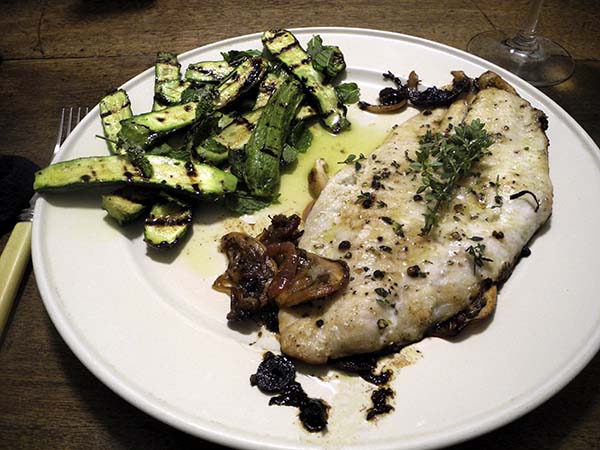
Although I’ve worked with this flounder recipe once before, this time it didn’t look or taste anything like that of last December.
Last night I almost burnt the bed on which the fish was to lie inside the oven. If knowing your way around mistakes is a sign of a mature cook, I may now have stepped out of my apprenticeship.
My recovery involved tossing some more wine and a splash of water into the hot cooking pan before adding the flounder to the scary brown stuff inside; we were both very lucky that the thin onion and lemon slices hadn’t quite reached the carbon point.
The plate was delicious, in a way of course that neither of us could have anticipated.
- one thinly-sliced organic Mexican lemon from Chelsea Whole Foods Market and one thinly-sliced 4 ounce fresh red onion from Jersey Farm Produce arranged at the bottom of a 9-by-13-inch enameled cast iron baking pan, dotted with 2 tablespoons of butter, 1/2 of cup of white wine and a few tablespoons of cold water added, sprinkled with 1 teaspoon of chopped thyme from Stokes Farm, seasoned with local sea salt and freshly ground black pepper, baked inside a 400º oven until the onions are soft and translucent, about 40 minutes [my near-burnt pan might have been the consequence of my having sliced everything too thinly, and/or not including enough liquid], the pan removed and two flounder fillets (7 ounces each) from American Seafood Company arranged on top, seasoned with salt and pepper, a few sprigs of thyme laid on top, and the fish basted with the liquid on the bottom, the flounder baked until just opaque and cooked through, maybe 15 minutes, and arranged on the plates with the lemon and onion
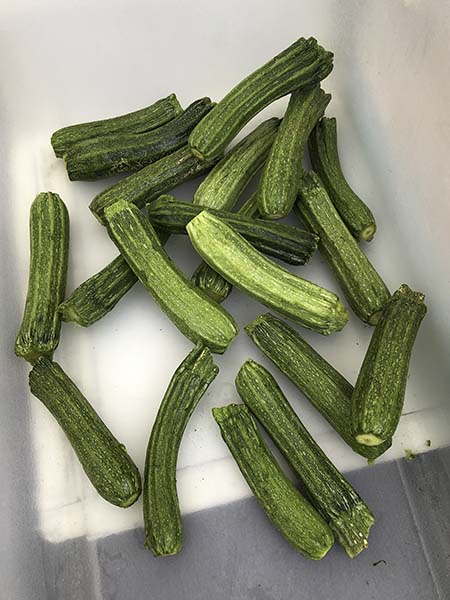

- eight small Costata Romanesco zucchini from Windfall Farms, sliced lengthwise into pieces about a quarter of an inch thick, dried, tossed inside a bowl with a little olive oil, 2 finely-chopped garlic cloves from Stokes Farm, sea salt, and freshly-ground black pepper, then pan grilled, turning 2 or 3 times, on top of a seasoned 2-burner ribbed cast iron plate, arranged on an oval platter, sprinkled with torn spearmint from Stokes Farm and more olive oil, allowed to rest for a few minutes while the fish was prepared (the squash tastes wonderful at any temperature)
- slices of a great table bread, introduced to avoid letting the sauces excape, Philadelphia’s Lost Bread Company ‘table bread’, whose productions we are fortunate to be able to buy in the Union Square Greenmarket
- the wine was an Oregon (Willamette Valley/Dundee Hills) white, Oregon Pinot Blanc 2016, ordered directly from Erath
- the music was the album, ‘Jacob Druckman: Lamia’, Gil Rose conducting the Boston Modern Orchestra Project, with Lucy Shelton
